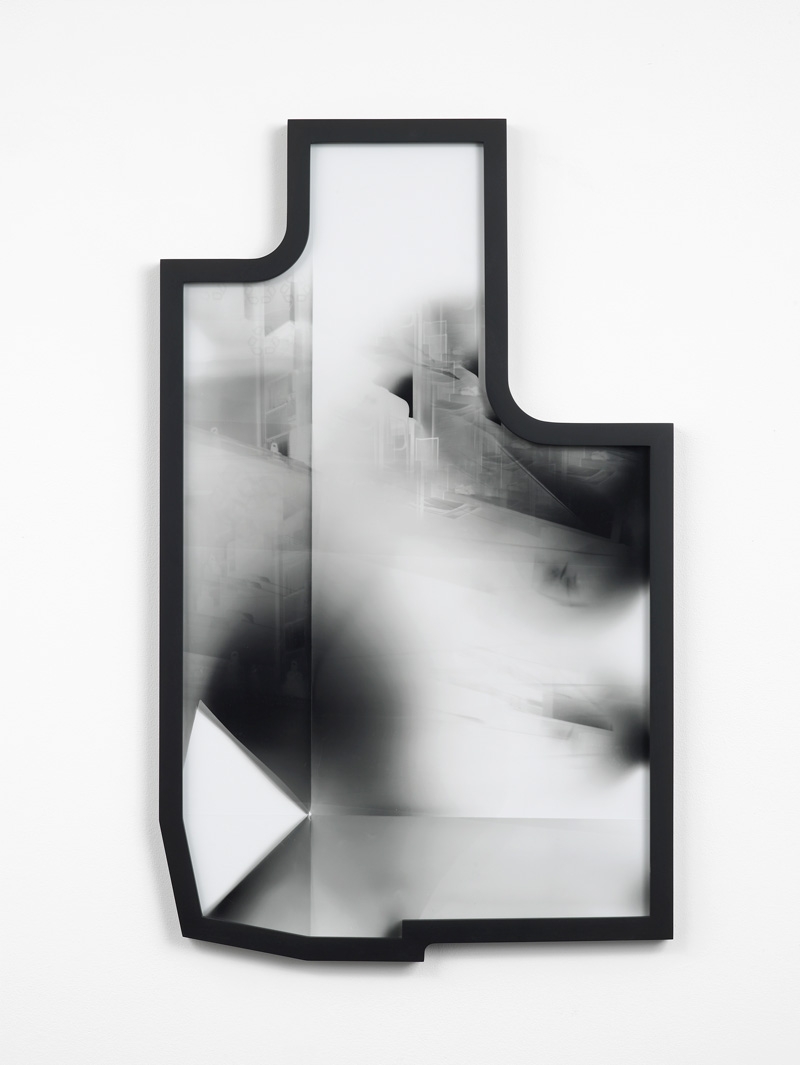Pinhole photographers enjoy starting from a losing position: they look at the Pentax, the Hasselblad, the digital SLR, and think: ‘No, I’ll get by with a shoebox or an oil drum.’ But it’s a mistake to interpret this as a tolerance of failure. The pinhole photographer can’t fail; any image at all is deemed to be a triumph over technological adversity. That’s why the discipline attracts so many mediocre artists.
Elizabeth McAlpine isn’t one of them. Everything here at Laura Bartlett Gallery, the photographs and the devices used to make them, is entitled The Map of Exactitude (2011–2) and encompasses two projects embarked on in, respectively, Vienna and London. In each case, objects were made in response to a borrowed studio, then used as cameras to produce a ‘portrait’ of the space.
In the upper gallery are two black triangular prisms made from card and mounted on wooden tripods, 1:1-scale recreations of the corners of the Vienna studio. After their construction, they were lined with photographic paper and returned to the corners of the space, and then a series of exposures were made. The resulting prints are mounted in frames that follow the irregular outline of the unfolded image. At first the prisms are baffling: if they are cameras, where are the apertures? Then you notice that the surfaces are pocked with blemishes: wherever McAlpine found a surface imperfection, she bored a tiny hole, allowing light into the chamber. This accounts for the multiple exposures in three of the four photographs.
Downstairs are objects from the London residency, plaster casts made from the studio’s vaulted ceiling, presented on plywood bases raised up on steel supports. Again, the multiple apertures are minute, their positions determined by chance – air bubbles caused by the drying of the plaster, perhaps. This makes the resulting photographs seem indigenous to the objects: these are the images they were supposed to produce, the ones inherent to their materiality.
Initially, the images themselves – blurred fragments of studio paraphernalia, paint pots, vertiginous glimpses of walls and lighting fixtures, random shards of light against black voids – seem arbitrary, aesthetically fallow documents of a project carried through to its conclusion, but your knowledge of their production is sufficient to have you to-ing and fro-ing between sculptural cause and photographic effect. In so doing, you relive McAlpine’s occupation of the studio architecture. If pinhole photography is sometimes compromised by the necessity of accepting whatever the ‘alternative’ technology delivers, McAlpine is deconstructing that fatalism rather than accepting it as a given: the viewer finds himself satisfyingly marooned between object and image, between tactile surface and pictorial depth. That said, I wonder what the images will convey when separated from their sculptural chaperones. To do so might downplay the causal connection between them, demoting their interdependency to a conceptual status rather than allowing it to be empirically experienced. The robust framing of the photographs and their titles – each is assigned a number – suggest they will fend for themselves, but here they remain effective as components of an ensemble.
This article first appeared in the October 2012 issue.
